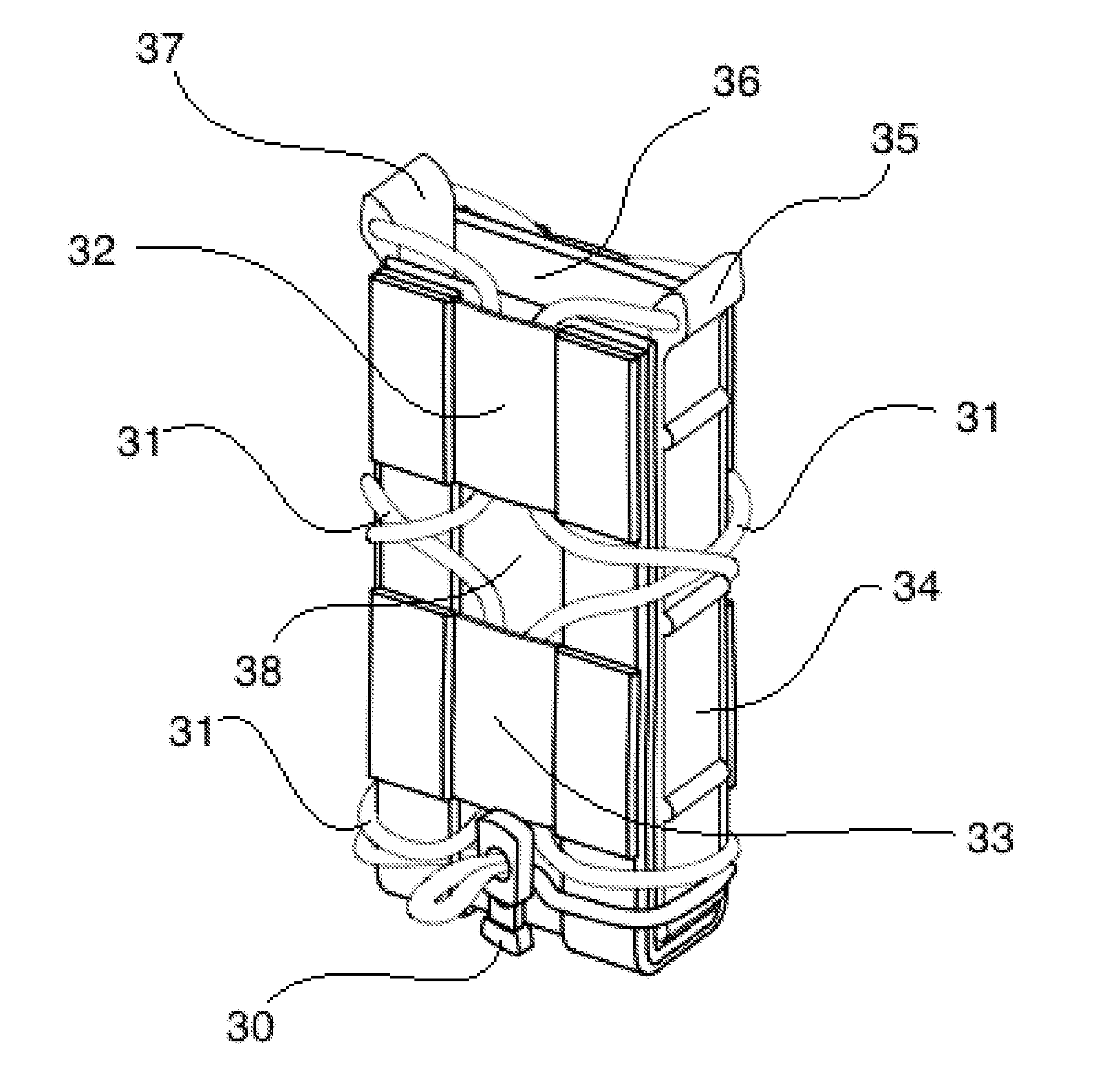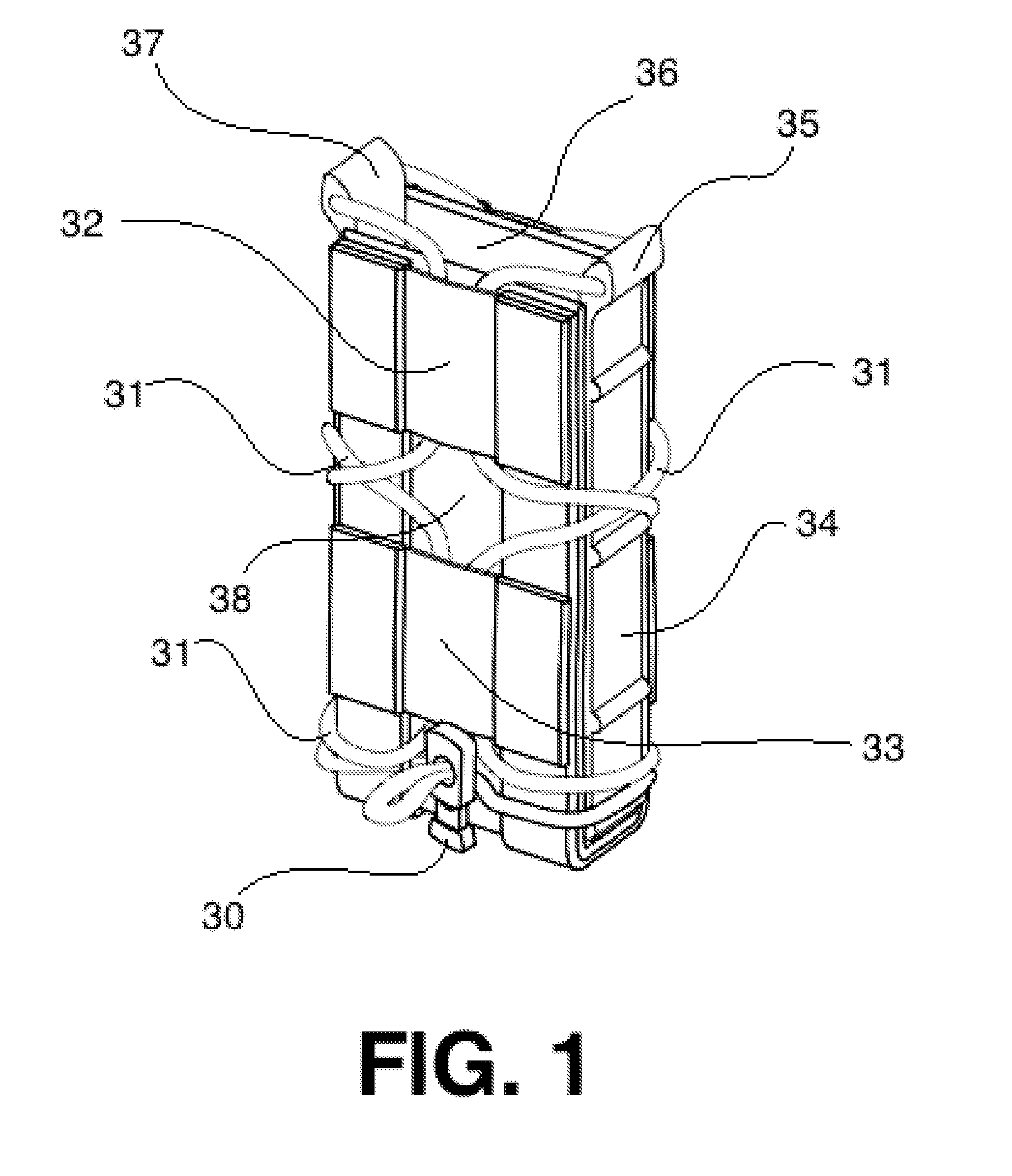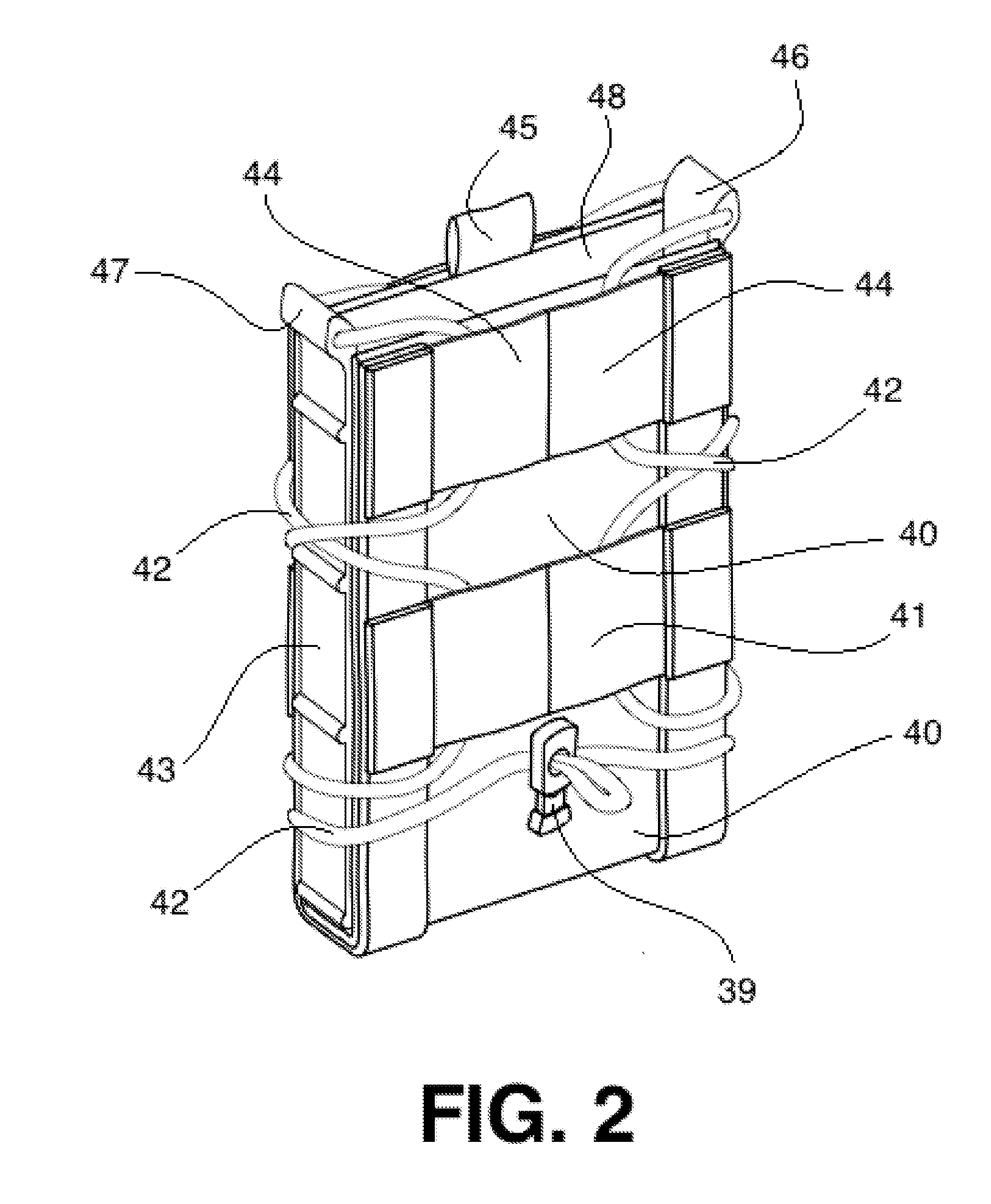Magazine retention device
a retention device and magazine technology, applied in the field of ammunition storage devices, can solve the problems of insecure and vulnerable ammunition magazines, obstructing the user's quick and efficient grasping of magazines by the latch mechanism, and affecting the safety of ammunition magazines, so as to achieve constant friction force
- Summary
- Abstract
- Description
- Claims
- Application Information
AI Technical Summary
Benefits of technology
Problems solved by technology
Method used
Image
Examples
Embodiment Construction
[0032]Referring now to the invention in more detail, in FIG. 1 and FIG. 3 there is shown a first preferred embodiment of the first disclosed invention, FIG. 1 depicting the embodiment and FIG. 3 depicting the component parts of the embodiment to facilitate a more full understanding of the embodiment. Referring now to FIG. 1 and FIG. 3 there is shown a magazine retention device comprising a pocket formed of a single length of pliable material serving as both a front side panel 38 and back side panel 36 and a U-shaped molded structural component riveted to the length of pliable material through a first bottom channel perforation 50 and a second bottom channel perforation 51, thus forming a bottom panel 61, a right side panel 34, and an opposing left side panel 55. Further shown is a distended elastic bungee 31 wrapped about the exterior of the pocket formed by the front side panel 38, back side panel 36, bottom panel 61, right side panel 34, and left side panel 55, the distended elast...
PUM
 Login to View More
Login to View More Abstract
Description
Claims
Application Information
 Login to View More
Login to View More - R&D
- Intellectual Property
- Life Sciences
- Materials
- Tech Scout
- Unparalleled Data Quality
- Higher Quality Content
- 60% Fewer Hallucinations
Browse by: Latest US Patents, China's latest patents, Technical Efficacy Thesaurus, Application Domain, Technology Topic, Popular Technical Reports.
© 2025 PatSnap. All rights reserved.Legal|Privacy policy|Modern Slavery Act Transparency Statement|Sitemap|About US| Contact US: help@patsnap.com



